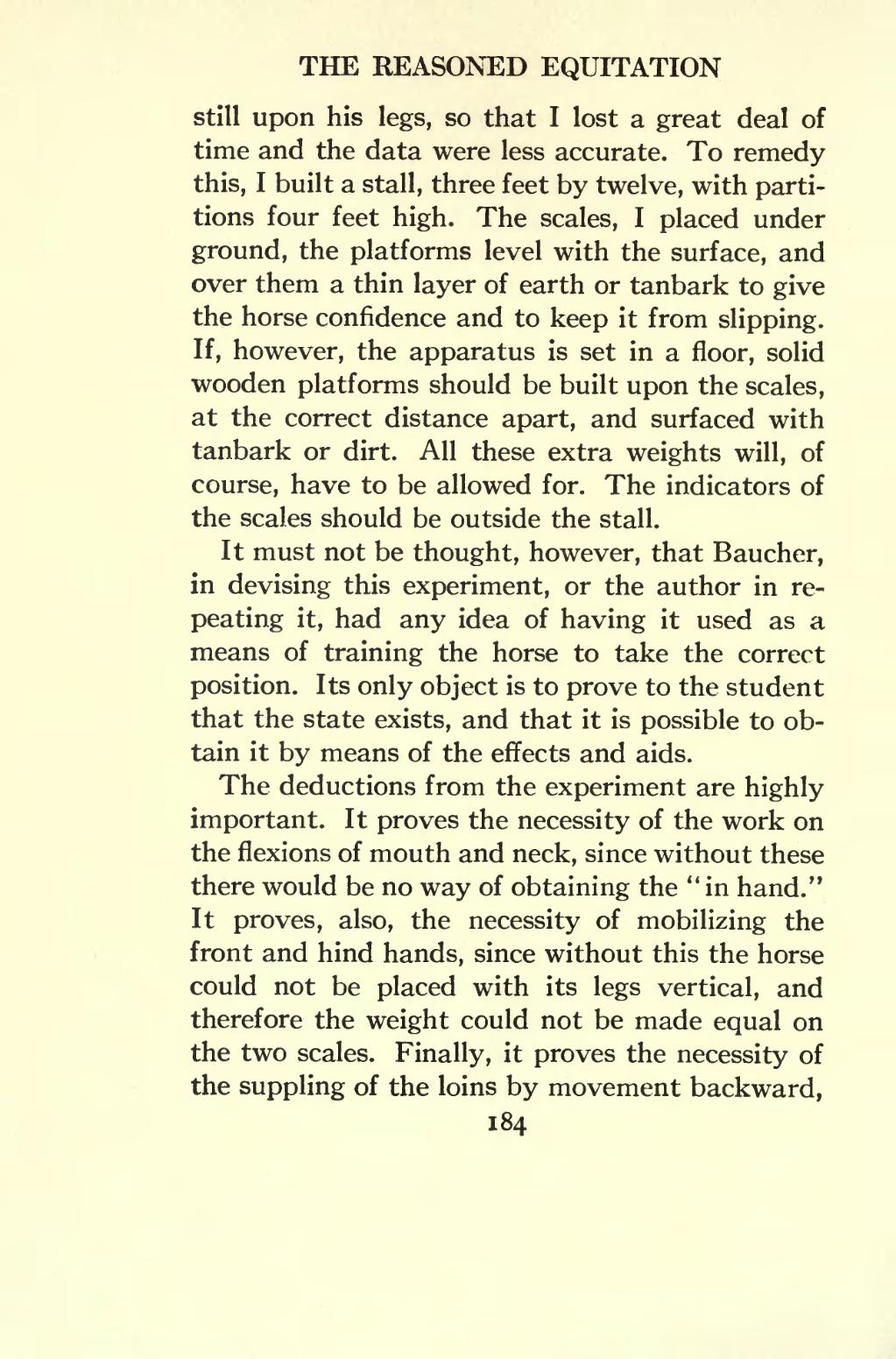still upon his legs, so that I lost a great deal of time and the data were less accurate. To remedy this, I built a stall, three feet by twelve, with partitions four feet high. The scales, I placed under ground, the platforms level with the surface, and over them a thin layer of earth or tanbark to give the horse confidence and to keep it from slipping. If, however, the apparatus is set in a floor, solid wooden platforms should be built upon the scales, at the correct distance apart, and surfaced with tanbark or dirt. All these extra weights will, of course, have to be allowed for. The indicators of the scales should be outside the stall.
It must not be thought, however, that Baucher, in devising this experiment, or the author in repeating it, had any idea of having it used as a means of training the horse to take the correct position. Its only object is to prove to the student that the state exists, and that it is possible to obtain it by means of the effects and aids.
The deductions from the experiment are highly important. It proves the necessity of the work on the flexions of mouth and neck, since without these there would be no way of obtaining the " in hand." It proves, also, the necessity of mobilizing the front and hind hands, since without this the horse could not be placed with its legs vertical, and therefore the weight could not be made equal on the two scales. Finally, it proves the necessity of the suppling of the loins by movement backward,
